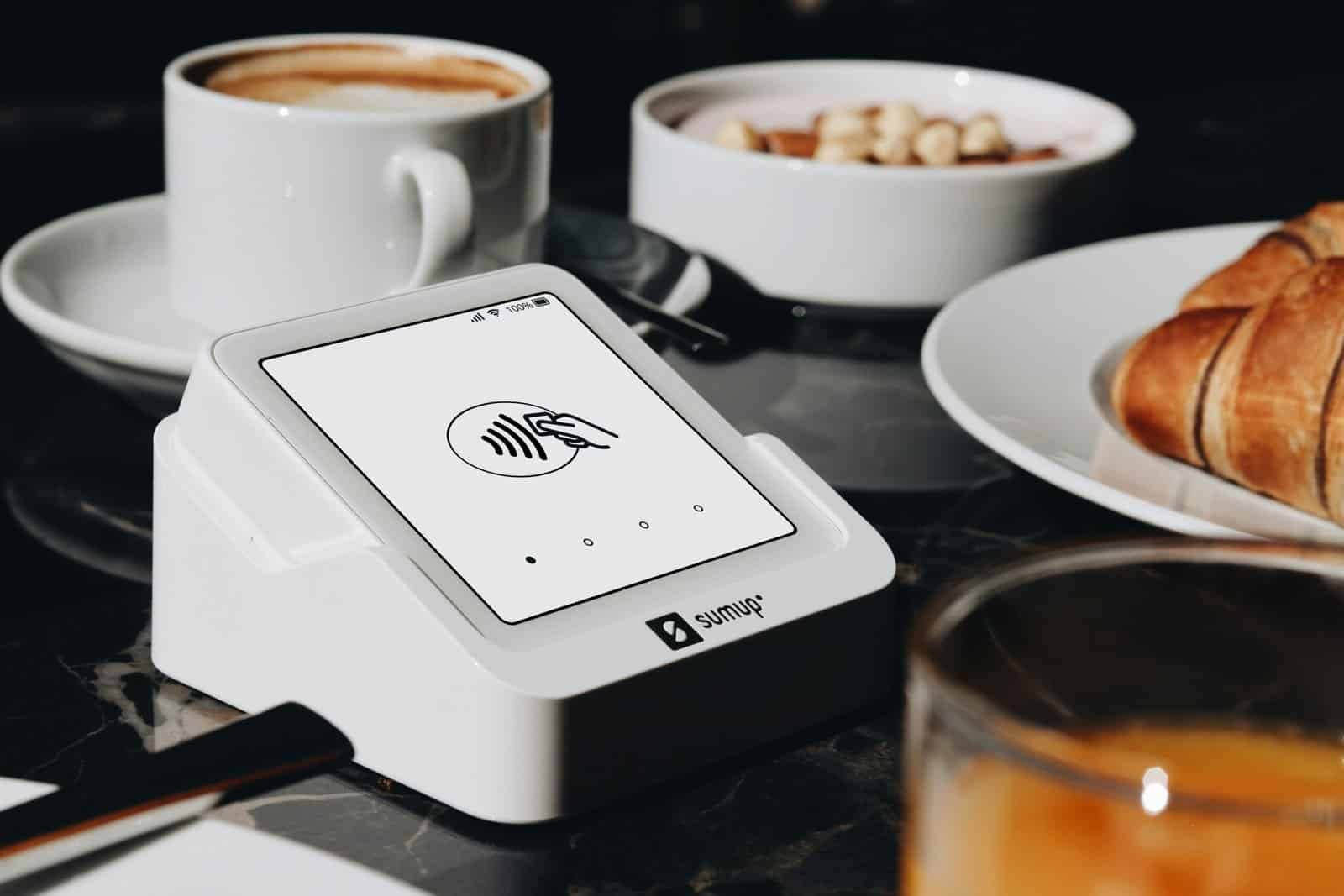Are you concerned about how to get paid securely as a freelancer while avoiding scams, delays, and excessive fees?

How Do Freelancers Get Paid Securely?
You can get paid securely by combining trusted payment methods, clear contracts, and secure workflows that reduce risk. This article walks you through practical options, step-by-step safeguards, and real-world tips so you can focus on your work rather than worrying about payment.
Overview: Why Payment Security Matters
Getting paid securely protects your income, reputation, and time. When you use secure systems and good practices, you reduce the chance of chargebacks, fraud, and long disputes.
Common Payment Methods and How Secure They Are
You should know the strengths and weaknesses of each payment method so you can choose the one that fits your project, client location, and trust level. The table below compares common payment options on speed, security, typical fees, and best use cases.
| Payment Method | Typical Speed | Security Level | Typical Fees | Best For |
|---|---|---|---|---|
| Bank transfer (ACH/SEPA) | 1–5 business days | High | Low | Domestic B2B payments |
| Wire (SWIFT) | Same day to 5 days | High | Medium–High | International large transfers |
| PayPal | Instant to 3 days | Medium | Medium | Small international payments, consumer clients |
| Stripe / Payment gateways | Instant | High | Medium | Card payments for businesses |
| Payoneer / Wise | 1–3 days | High | Low–Medium | International freelancers |
| Escrow (freelance marketplaces) | Depends | High | Platform fees | Projects with milestones |
| Cryptocurrency | Minutes to hours | Variable | Low | Tech-savvy clients, borderless payments |
| Checks (paper) | 5–10 business days | Low–Medium | Low | Domestic clients who prefer bank checks |
| Cash | Immediate | Low | None | In-person small gigs only |
Bank Transfers (ACH, SEPA, SWIFT)
Bank transfers are often the most secure way to receive larger sums because banks use regulated systems and you can verify payer details. You should confirm routing/account numbers and use remittance references so you can reconcile payments easily.
Payment Processors (PayPal, Stripe, Payoneer)
Payment processors are convenient and fast, and they include buyer/seller protections, but they can hold funds or impose chargebacks in disputes. You should read fee schedules and dispute policies, and encourage clients to pay using business accounts to reduce holds.
Freelance Marketplaces and Escrow Services
Marketplaces like Upwork, Fiverr, and specialized escrow services hold funds until agreed milestones are met, protecting both parties. You should use escrow for new or high-value clients, since it creates a neutral process for releasing payment after work is approved.
Digital Wallets and P2P Apps (Venmo, Cash App)
Digital wallets are easy for casual payments, but they may lack payment protection for business transactions and often have transfer limits. You should avoid relying on consumer P2P apps for substantial client work unless you have a long-standing relationship and understand the app’s limits.
Cryptocurrency
Crypto can be fast and borderless, and it avoids bank transfer fees, but it carries price volatility and requires technical know-how for secure custody. You should only accept crypto if you can secure private keys, convert to fiat when needed, and comply with tax reporting.
Checks and Cash
Checks and cash are traditional but less secure. Checks can be forged and take time to clear, and cash has no record unless you generate one. You should avoid cash unless the client is local and you issue a receipt, and accept checks only from trusted clients with a waiting period before marking as paid.
Setting Up Secure Payment Processes
You should design payment processes that minimize ambiguity and provide a clear trail from offer to payment. A reliable process reduces confusion and speeds up payment.
Use Written Contracts and Clear Terms
A written contract should define scope, deliverables, timeline, pricing, payment schedule, and remedies for late or non-payment. You should keep a copy of signed contracts and attach them to invoices so clients cannot claim terms were unclear.
Require Deposits and Milestones
Asking for an upfront deposit or dividing a project into milestones secures cash flow and reduces risk for longer engagements. You should state deposit amounts and milestone criteria in the contract to avoid disagreements.
Use Invoicing Software with Tracking and Encryption
Invoice software creates professional invoices, tracks payment status, sends reminders, and stores records securely with encryption. You should use solutions like QuickBooks, FreshBooks, Xero, or Wave, and enable SSL/HTTPS and password protection.
Implement Two-Factor Authentication and Strong Passwords
You must protect payment accounts and platforms using two-factor authentication (2FA) and unique, strong passwords. You should use a reputable password manager and avoid reusing credentials across services.
Keep Records and Backups
Maintain records of contracts, invoices, receipts, bank statements, and correspondence so you can prove work delivery and payment terms. You should store backups in encrypted cloud storage and offline copies for redundancy.
Use Secure Communication Channels
Send invoices and payment links over secure channels, and avoid sharing banking details in public or unencrypted messages. You should verify unexpected payment requests by calling the client or using a separate confirmed email to reduce spoofing risk.

Managing International Payments Safely
You should be aware of cross-border rules, currency conversion, and regulatory checks to avoid delays and hidden fees. Planning ahead saves you money and avoids surprises.
Choose the Right Transfer Method
For international clients, services like Wise and Payoneer typically offer lower fees and better exchange rates than traditional banks. You should compare transfer speed, fees, and the recipient’s ability to access funds.
Understand Currency Conversion and Hedging
Exchanging currencies can cost you via spread and commissions, so you may charge clients in their currency or set a clause to pass conversion fees to the client. You should consider using multi-currency accounts to receive payments in popular currencies with lower conversion costs.
Comply with Local Regulations and Taxes
Different countries have varying reporting and withholding rules for cross-border income, so you must stay informed and collect necessary forms like W-8BEN or VAT invoices where applicable. You should consult a tax advisor for complex international arrangements.
Use Clear Remittance Information
Provide a clear payment reference and breakdown of what the payment covers to ensure banks and clients reconcile correctly. You should include invoice numbers and project codes in remittance fields.
Handling Fees, Exchange Rates, and Taxes
You should set your pricing or payment terms to account for processing fees and taxes so your net receivable matches your expectations. Transparent fee handling prevents disputes.
Who Pays Transaction Fees?
Decide whether you or the client will cover processing and conversion fees, and document this in your contract or invoice. You should show gross amount, fee amount, and net received so the client understands the totals.
Building Fees into Your Rates
Many freelancers build typical payment fees into their hourly or project rates to avoid adding separate fee lines in invoices. You should calculate average fees across common payment methods and adjust your rates accordingly.
VAT and Sales Tax Considerations
Depending on your location and the client’s location, you might need to charge VAT or sales tax. You should register for tax IDs where required and provide compliant invoices to claim input tax credits.
Example: Fee Handling
If a client uses PayPal and the fee is 3.4% + $0.30, you can either (a) ask the client to pay the fee in addition, or (b) increase your price slightly to cover the expected cost. You should state your chosen approach in the agreement to prevent surprise deductions.

Protecting Yourself From Scams and Fraud
You should remain vigilant, particularly with new clients or unusual requests, because scammers target freelancers frequently. Learning common scam patterns helps you avoid losing time and money.
Common Red Flags
Be cautious if a client insists on paying via untraceable methods, requests personal financial information, or asks you to refund part of a payment after a supposed overpayment. You should suspend work and seek verification whenever you spot these signs.
Upfront Payment Scams and Overpayment Scams
Scammers sometimes send fake payment confirmations or overpay by check and ask you to return the difference. You should wait for funds to fully clear in your bank before refunding or delivering final work.
Fake Job Offers and Phishing
If a job posting requires unusual access to personal accounts or requests you to click unknown links for payment setup, treat it as potentially malicious. You should verify contact details and use official platform channels to confirm offers.
How to Verify New Clients
Verify client identity by checking their company website, LinkedIn profile, and domain-owned email address rather than free webmail. You should ask for a purchase order, company billing details, and prefer payments from corporate accounts for B2B projects.
What to Do If You Suspect Fraud
If you suspect fraud, stop work, document communications, take screenshots, and report the account to the payment platform and any marketplace you used. You should consult your bank and, if necessary, local law enforcement for large losses.
Dispute Resolution and Collections
You should have a plan for resolving disputes, because even with preventive measures, disagreements happen. Fast, calm handling often saves time and money.
Platform Dispute Tools
If you worked through a marketplace, use its resolution center or arbitration options since these platforms often provide stronger protections. You should provide all evidence and ask the platform to enforce escrow or payment holds.
Direct Negotiation and Mediation
When working directly with a client, first attempt to resolve issues through polite negotiation and a clear presentation of facts. You should propose mediation if talks stall, which is often cheaper than litigation.
Small Claims Court and Legal Action
For unpaid invoices of significant amounts, small claims court or hiring a collections attorney might be appropriate. You should weigh legal costs against the likely recovered amount before proceeding.
Using Collections Agencies
Collections agencies can pursue unpaid debts but typically charge significant percentages of recovered funds. You should use them as a last resort and vet agencies for reputation and compliance.

Security for Your Devices and Accounts
You should treat devices and accounts as payment gateways’ weakest links because compromised computers or phones lead to stolen credentials. Good digital hygiene protects both your income and client data.
Keep Software Updated and Use Antivirus
Regularly update your operating system, browser, and apps, and use reputable antivirus software to block malware and keyloggers. You should enable automatic updates and scan devices when suspicious activity appears.
Use Encrypted Storage for Sensitive Files
Store contracts, invoices, and banking details in encrypted folders or services with strong access controls. You should avoid sending unencrypted attachments that contain bank or tax numbers.
Secure Your Email and Communication Tools
Email is a common target for fraud, so enable 2FA, use strong passwords, and watch for spoofed addresses. You should also consider secure file-sharing tools for sending confidential documents.
Limit Access and Use Role-Based Permissions
If you work with subcontractors or assistants, give them the minimum access needed for their tasks and monitor account activity. You should revoke access promptly when someone no longer needs it.
Choosing the Right Payment Platform or Provider
You should weigh security, fees, speed, and client convenience when picking providers, since the best choice depends on your niche and clientele. Mixing a couple of reliable options often provides flexibility without too much complexity.
Checklist for Selecting Providers
Look for strong encryption, 2FA, transparent fees, a track record of payer protection, and customer support responsiveness. You should also confirm whether the provider supports your country and tax reporting needs.
Recommended Combinations
For local B2B work, consider bank transfer + invoicing software; for global small clients, use PayPal or Wise; for marketplace work, use the platform’s escrow. You should maintain an emergency backup method in case one provider has outages.

Pricing Strategies and Payment Terms to Reduce Risk
You should design pricing and terms to encourage on-time payment while protecting your cash flow. Clear, enforceable terms discourage late payments.
Suggested Payment Terms
Common terms include a 30% deposit, net-14 or net-30 final payment, and milestone-based releases for longer projects. You should include late payment fees and a clause allowing you to pause work for unpaid invoices.
Late Fees and Interest
Stating a modest late fee (e.g., 1.5% per month) motivates timely payment and compensates for delays. You should ensure your jurisdiction allows your chosen late fee and that it’s clearly disclosed in agreements.
Retainers and Ongoing Work
For retainer work, require a recurring payment setup and a signed agreement with termination notice and refund rules. You should use automatic billing through a trusted gateway to reduce administrative friction.
Tax Reporting and Recordkeeping
You should track income and expenses accurately to meet tax obligations and to avoid surprises during audits. Good recordkeeping makes tax season easier and shows professionalism to clients.
Invoices and Receipts
Issue invoices with unique numbers, dates, payment terms, and tax details. You should keep copies of receipts for business expenses and reconcile them monthly against bank statements.
Tax Forms and Local Rules
Know the tax forms required by clients or platforms, such as W-9, W-8BEN, or VAT invoices, and supply them timely. You should consult a local accountant for withholding rules related to foreign clients.
Year-End Preparation
Organize income by client, platform, and payment method to streamline year-end reporting. You should save an emergency fund to cover tax payments if your freelancing income varies.
Best Practices Checklist
This checklist helps you implement secure payment habits that reduce risk and improve cash flow. Use it to audit and improve your current freelance payment setup.
| Action | Why It Helps |
|---|---|
| Use written contracts | Clarifies expectations and provides legal backing |
| Require deposits/milestones | Reduces upfront risk and secures partial payment |
| Choose reputable payment providers | Minimizes fraud and provides dispute tools |
| Enable 2FA everywhere | Prevents unauthorized account access |
| Use invoicing software | Tracks payments and automates reminders |
| Keep encrypted backups | Ensures records are safe and accessible |
| Verify new clients | Reduces likelihood of scams and fake clients |
| Charge for fees or build them in | Ensures net income matches expectations |
| Keep tax records updated | Avoids penalties and simplifies filings |
| Pause work for non-payment | Leverages leverage to get paid |
Sample Templates You Can Adapt
You should use these short templates as a starting point and customize them to match your services and legal requirements. Clear wording speeds payment and reduces confusion.
Sample Payment Terms Clause
You require a 30% non-refundable deposit to begin work, with the remaining balance due within 14 days after delivery or upon milestone approval. You charge a 1.5% monthly late fee on unpaid balances and reserve the right to pause services until full payment is received.
Sample Invoice Line Items
Include invoice number, invoice date, due date, client billing name, itemized services with hours or fixed fees, subtotal, taxes, payment method instructions, and a payment reference. You should list your bank details or a secure payment link and a brief note thanking the client for prompt payment.
Sample Late Payment Reminder Email
Politely remind the client that the invoice is overdue, attach the invoice again, restate the outstanding amount and due date, and mention late fees if applicable. You should offer to arrange a short call if they have questions and suggest a firm deadline for payment.
What To Do When a Client Doesn’t Pay
You should take a measured, escalating approach: communicate, document, use platform dispute tools, and then consider formal collections. Prompt action and calm professionalism tend to recover more payments than threats.
Step-by-Step Approach
- Send a polite reminder and attach the invoice. 2. If unpaid after a week, send a firmer notice citing the contract clause. 3. Offer a payment plan if the client is facing temporary cash flow issues. 4. Use marketplace dispute resolution if applicable. 5. As a last resort, consider legal action or collections.
Maintain Professionalism
Even when you’re pressured or angry, keep communications factual and professional to preserve reputation and evidence for disputes. You should also avoid public shaming, which can backfire legally.
Advanced Options: Insurance and Payment Protection
If you depend on freelancing for the majority of your income, consider professional indemnity or trade credit insurance to protect against non-payment or breaches. You should evaluate premiums and coverage limits to see if they justify the cost.
Escrow and Third-Party Guarantees
For large projects, using a trusted escrow service or a third-party payment guarantee adds a layer of protection. You should ensure escrow release milestones are objective and documented.
Final Thoughts
You can get paid securely by using clear contracts, verified clients, strong account security, and reliable payment methods tailored to your needs. Implementing the practical steps in this guide will reduce risk, improve cash flow, and let you focus on delivering great work.
